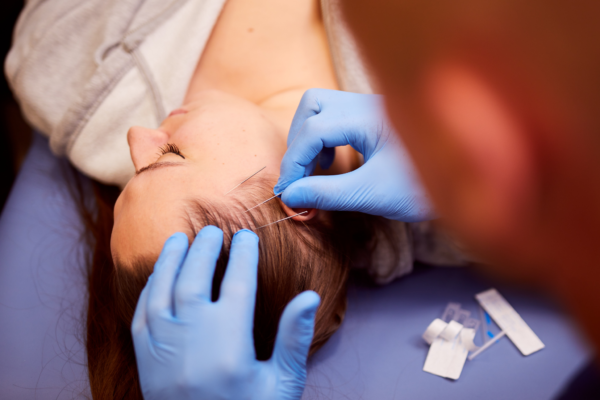
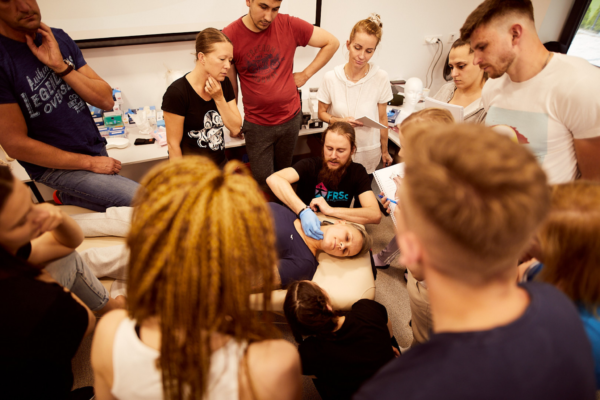
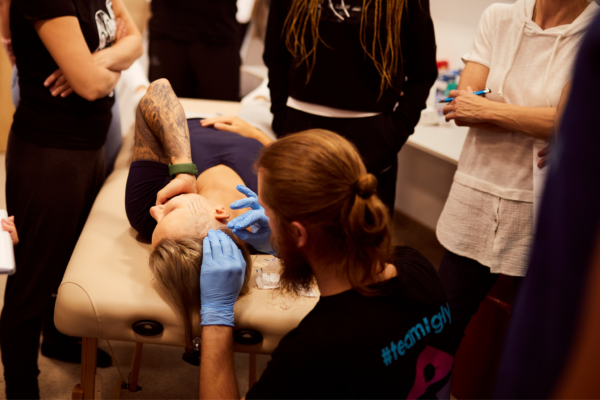
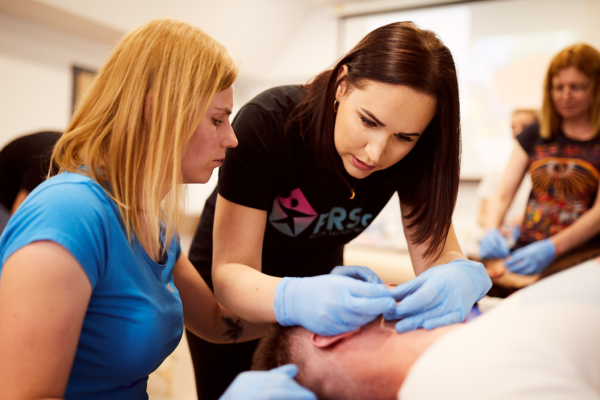
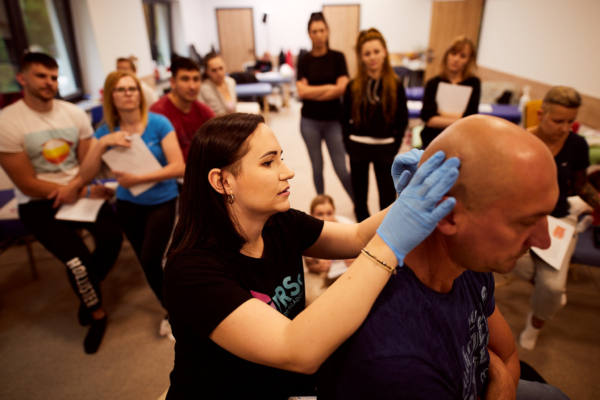

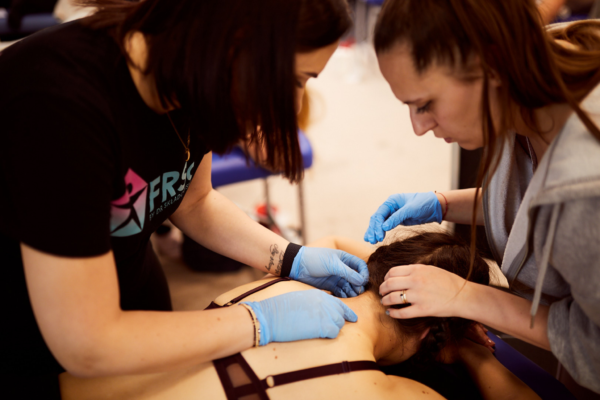
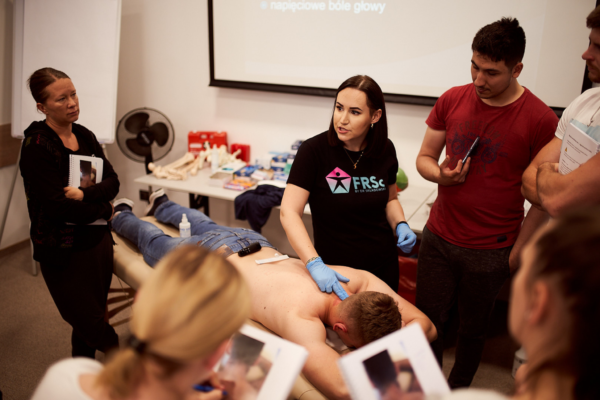
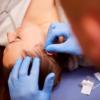
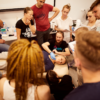
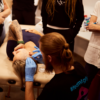


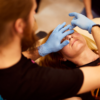
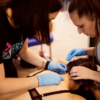
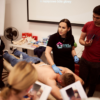
DRY NEEDLING by FRSc – Module II
2 550,00 zł
The second module of the DRY NEEDLING course according to FRSc, presenting an innovative Polish method of using the so-called "dry needling" in the treatment of musculoskeletal problems and more.
27 godzin
hours
45 educational
points
Place:
Spała / Big Cities
Funding
KFS / BUR
The second course module of DRY NEEDLING by FRSc, presenting an innovative Polish method of using the so-called "dry needling" in the treatment of musculoskeletal problems and more. What makes it unique among other needle methods?
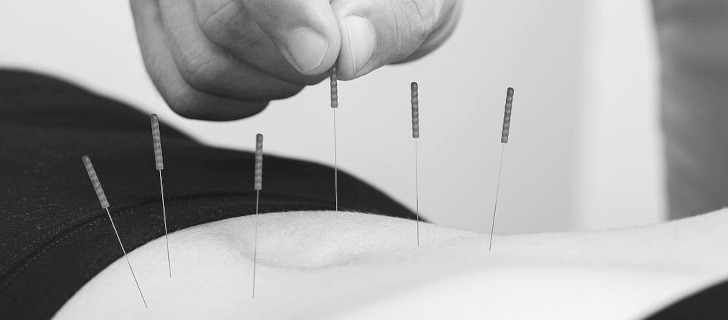
The basis of the Dry Needling method lies in FRSc, a concept created by an orthopedic doctor Radosław Składowski, which logically distinguishes and differentiates several repetitive pathomechanisms that cause diseases, limitations and pain. In its procedure, FRSc assumes finding the root causes of the problem with which the patient comes to us, and therapy aimed not at the symptoms, but at the direct cause of these.
What makes our course different?
- we introduce you to the world of FRSc, interspersing the lecture with a practical part, which will allow you to understand the assumptions of the method and facilitate work in the office from the first day after returning from the course,
- we don't just teach you to prick - this course teaches you to think and look for the causes of disorders, and not just stick needles into painful places,
- we work on locations that are completely unjustly omitted in needle therapy by many (e.g. meniscus, symphysis disc and many others), because they are often the cause of the ailments with which the patient comes to us,
- wherever we can use a manual technique instead of a needle - you will get it from us, even though it goes beyond the dry needling course program,
- we put a lot of emphasis on various "lifehacks" - we share our experiences on how to work safely, effectively and without complications (and if any appear, how to deal with them),
- The course consists of two modules:
- the first discusses FRSc theory with practical references and hands-on learning of basic applications,
- you can do the second module after gaining experience and getting used to it, and you will learn advanced application techniques
For who?
Na szkolenie zapraszamy studentów fizjoterapii i przedstawicieli zawodów medycznych: lekarz, lekarz dentysta, fizjoterapeuta, pielęgniarka, położna, ratownik medyczny, technik masażysta, osteopata, technik ortopeda.
Do you work in another medical profession? Contact us!
Contraindications
- significant, uncorrectable vision defects
- impaired motor coordination (the course requires high precision)
If you have a disability declaration, we recommend an individual consultation. In case of any other doubts too.
09:00 – 09:45
Opening, discussion of organizational issues, introduction of Participants and Instructors
09:45 – 10:30
Reminder and consolidation of information from the 1st module
10:30 – 10:45
Break
10:45 – 11:30
Omówienie aplikacji na algodystrofię w obszarze n. trójdzielnego oraz szew jarzmowo-skroniowy, pokaz, ćwiczenia praktyczne
11:30 – 12:15
Omówienie aplikacji na miogelozy m. żwacza oraz dół skrzydłow, pokaz, ćwiczenia praktyczne
12:15 – 12:30
Break
12:30 – 13:15
Omówienie aplikacji na m. naczaszny i skroniowy, pokaz, ćwiczenia praktyczne
13:15 – 14:00
Omówienie aplikacji na pęczki naczyniowe oczodołu, pokaz, ćwiczenia praktyczne
Omówienie algorytmu DN w terapii zatok i alergii (uzupełnione o techniki manualne), pokaz,
Practical exercises
14:00 – 15:00
Break
15:00 – 15:45
Omówienie aplikacji na mm. podpotyliczne, pokaz, ćwiczenia praktyczne
15:45 – 16:30
Omówienie aplikacji na mm. wielodzielne w odcinku szyjnym, pokaz, ćwiczenia praktyczne
16:30 – 16:45
Break
16:45 – 17:30
Omówienie aplikacji na m. łopatkowo-gnykowy oraz m. pochyły środkowy, pokaz, ćwiczenia praktyczne
17:30 – 18:15
Omówienie aplikacji na dysk mostkowo-obojczykowy, pokaz, ćwiczenia praktyczne
09:00 – 09:45
Omówienie aplikacji na m. podłopatkowy, pokaz, ćwiczenia praktyczne
09:45 – 10:30
Omówienie aplikacji „barkobójca”, pokaz, ćwiczenia praktyczne
Omówienie aplikacji na dolną część neurokompartmentu n. promieniowego
10:30 – 10:45
Break
10:45 – 11:30
Omówienie aplikacji na neurokompartment n. pośrodkowego (algorytm na cieśń rzekomą), pokaz, ćwiczenia praktyczne
11:30 – 12:15
Omówienie aplikacji na więzadło poprzeczne nadgarstka (algorytm na cieśń prawdziwą), pokaz, ćwiczenia praktyczne
12:15 – 12:30
Break
12:30 – 13:15
Omówienie aplikacji na błonę międzykostną przedramienia, obejmy dystalnej części przedramienia oraz m. nawrotny czworoboczny, pokaz, ćwiczenia praktyczne
13:15 – 14:00
Omówienie aplikacji na „smartfonowy kciuk” oraz „palec zatrzaskujący”, pokaz, ćwiczenia praktyczne
14:00 – 15:00
Break
15:00 – 15:45
Omówienie aplikacji na krawędzie boczne smug ścięgnistych m. prostego brzucha oraz m. poprzeczny brzucha, pokaz, ćwiczenia praktyczne
Omówienie aplikacji na m. równoległoboczny, pokaz, ćwiczenia praktyczne
15:45 – 16:30
Omówienie aplikacji na m. czworoboczny mięśni i m. lędźwiowy większy, pokaz, ćwiczenia praktyczne
16:30 – 16:45
Break
16:45 – 17:30
Omówienie aplikacji na miogelozę m. najdłuższego grzbietu oraz przyczep dystalny m. najszerszego grzbietu, pokaz, ćwiczenia praktyczne
17:30 – 18:15
Omówienie aplikacji na m. wielodzielny w odcinku piersiowym i lędźwiowym, pokaz, ćwiczenia praktyczne
Omówienie aplikacji na m. biodrowy, pokaz, ćwiczenia praktyczne
09:00 – 09:45
Omówienie aplikacji na więzadła miednicy (biodrowo-lędźwiowe, krzyżowo-biodrowe, krzyżowo-guzowe) oraz m. czworoboczny uda, pokaz, ćwiczenia praktyczne
09:45 – 10:30
Omówienie aplikacji na spojenie łonowe, pokaz, ćwiczenia praktyczne
10:30 – 10:45
Break
10:45 – 11:30
Omówienie aplikacji na przednie dojście do stawu biodrowego (algorytm na koksartrozy oraz FAI), pokaz, ćwiczenia praktyczne
11:30 – 12:15
Omówienie algorytmu na „kolano skoczka” oraz punkt maziówkowy kolana, pokaz, ćwiczenia praktyczne
12:15 – 12:30
Break
12:30 – 13:15
Omówienie aplikacji na łąkotkę przyśrodkową, pokaz, ćwiczenia praktyczne
13:15 – 14:00
Omówienie aplikacji na „shin splits”, pokaz, ćwiczenia praktyczne
14:00 – 14:45
Omówienie algorytmu wspierającego terapię „hallux valgus”, pokaz, ćwiczenia praktyczne
Omówienie postępowania z modzelami
14:45 – 15:00
PODSUMOWANIE I ZAKOŃCZENIE KURSU

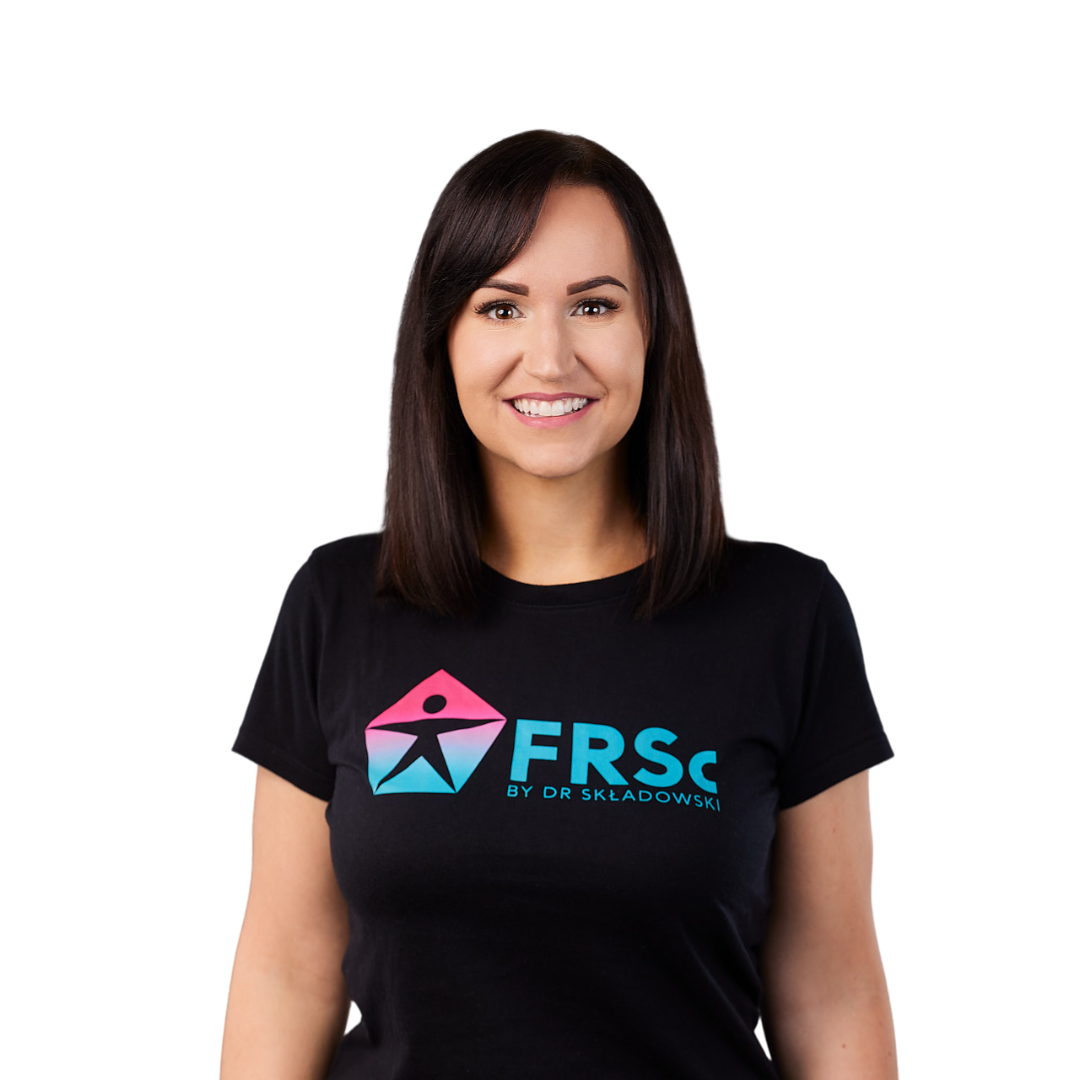
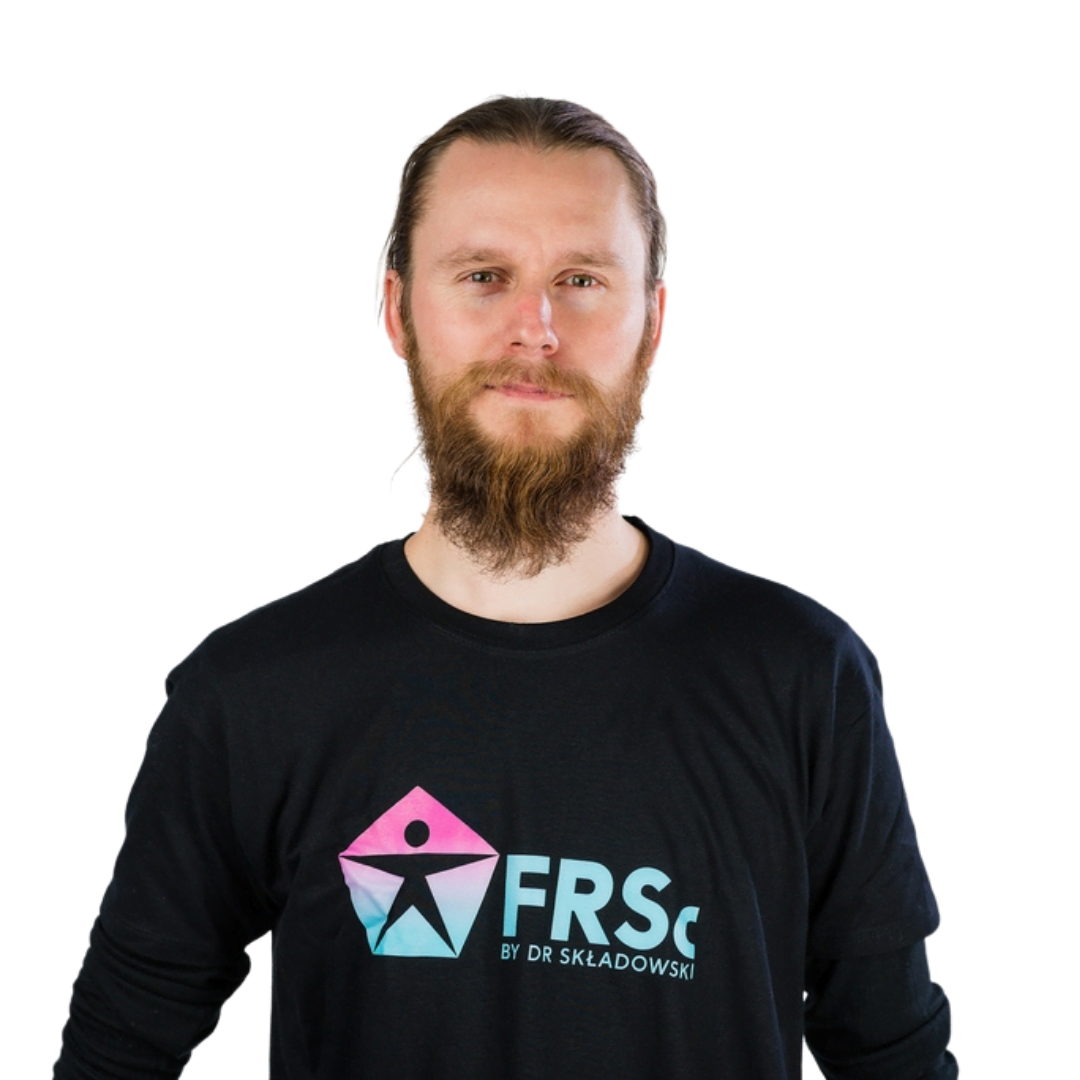

Reviews
There are no reviews yet.